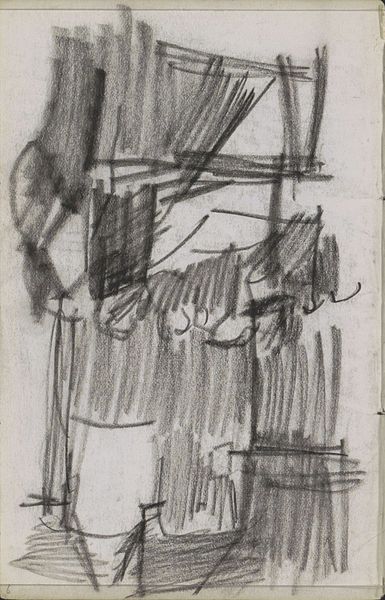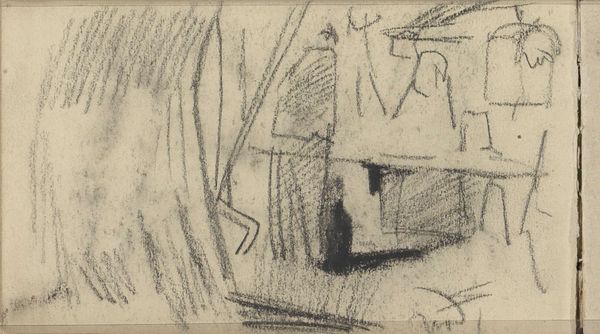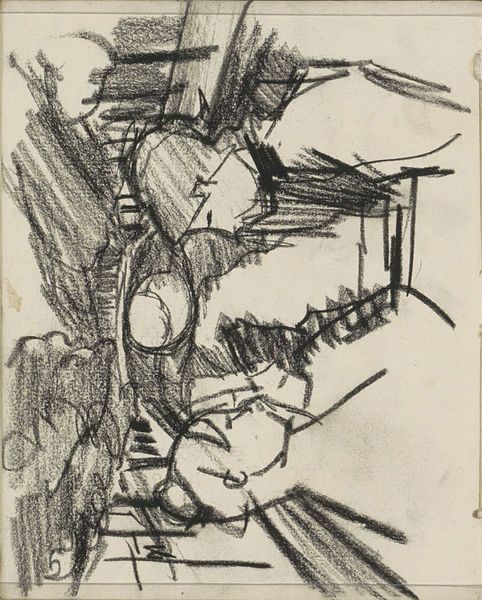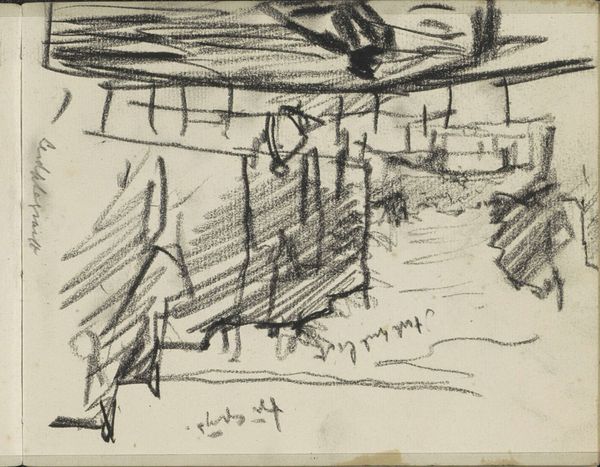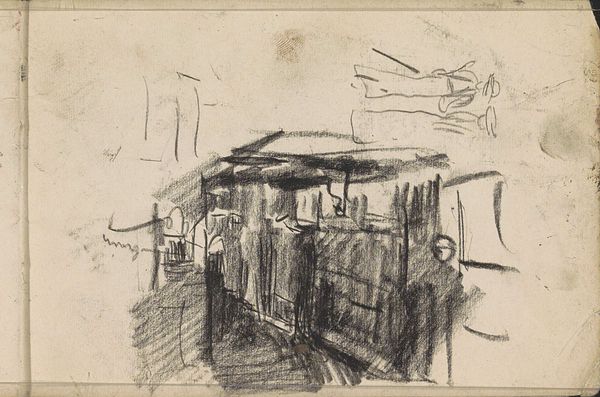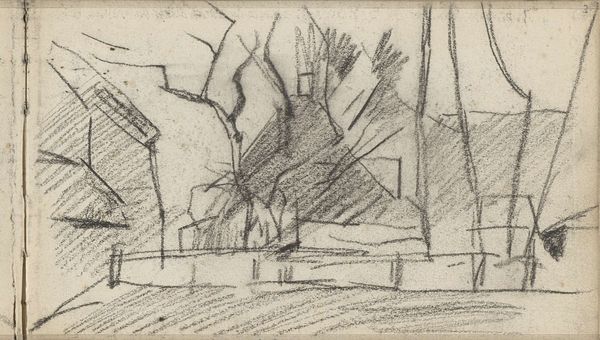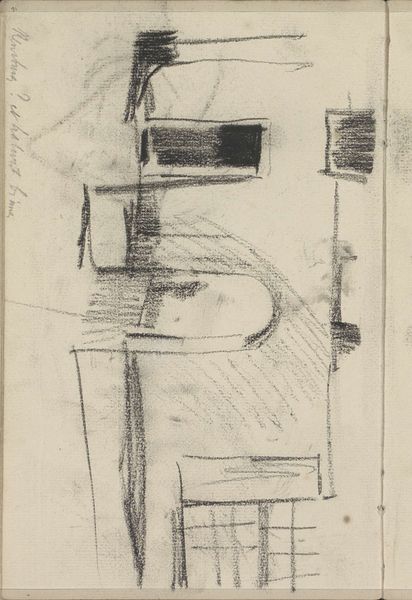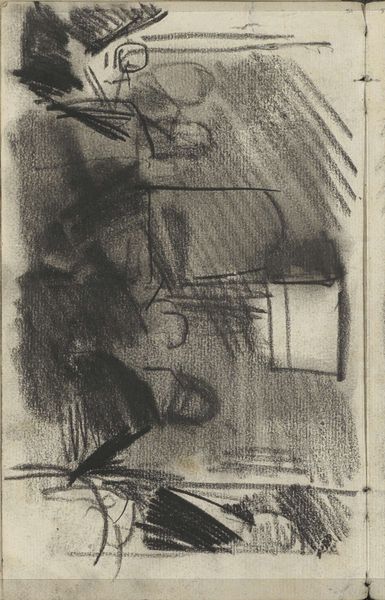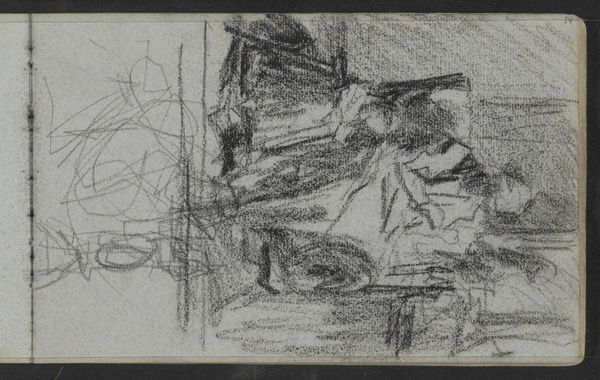
drawing, charcoal, architecture
#
drawing
#
impressionism
#
geometric
#
charcoal
#
architecture
Copyright: Rijks Museum: Open Domain
Editor: Here we have George Hendrik Breitner’s "Architectuurstudie," a charcoal drawing dating from around 1883-1885. The stark blacks and whites create an unfinished feel. It’s almost ghostly. What jumps out to you when you see it? Curator: It speaks to the rapid urbanization Amsterdam was experiencing. Breitner wasn’t just documenting buildings, he was capturing a society in flux. Architecture became symbolic of progress, of ambition. What societal factors might have influenced Breitner's interest in these studies, particularly during the rise of Impressionism? Editor: That makes sense. There was so much change happening so quickly; he probably wanted to capture that moment. But the image also feels a bit impersonal and detached. Curator: Exactly! While seemingly objective, it reflects the societal value placed on modernization and industrialization. It presents architecture not as individual homes, but as components of a rapidly evolving cityscape, influenced by larger economic forces and governmental planning policies. The charcoal medium itself feels almost clinical, don't you think? Editor: I see what you mean. It lacks a human touch, like he’s more interested in the structures than the people living there. It kind of reminds me of factory design plans. Curator: Precisely. It raises questions about how artists participated in shaping perceptions of urban development, sometimes uncritically embracing the narrative of progress promoted by those in power. Editor: So, the image isn't just about the building. It's also about how architecture reflects broader cultural values at a specific moment. That gives me a totally different perspective on architectural drawings. Curator: Indeed. Consider who gets to decide which buildings are sketched, studied, and remembered in art history.
Comments
No comments
Be the first to comment and join the conversation on the ultimate creative platform.
